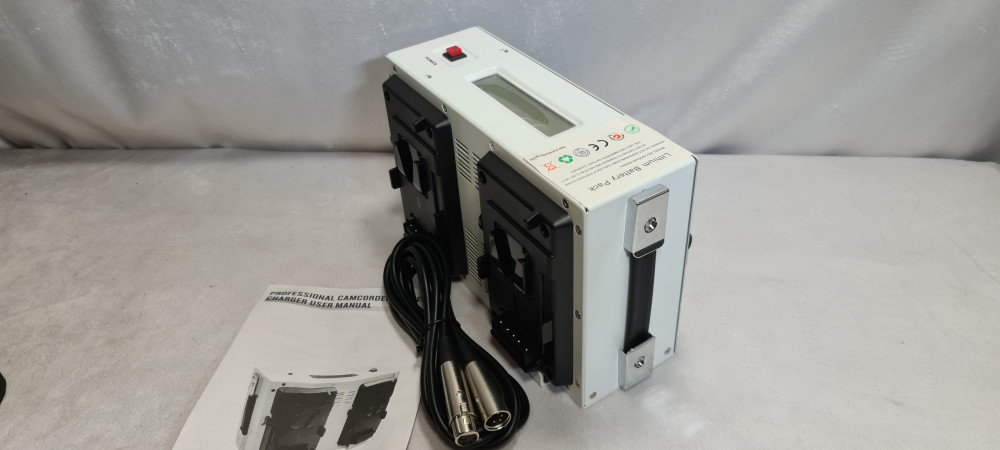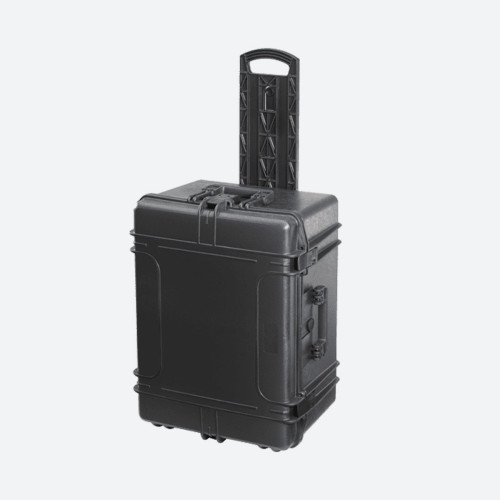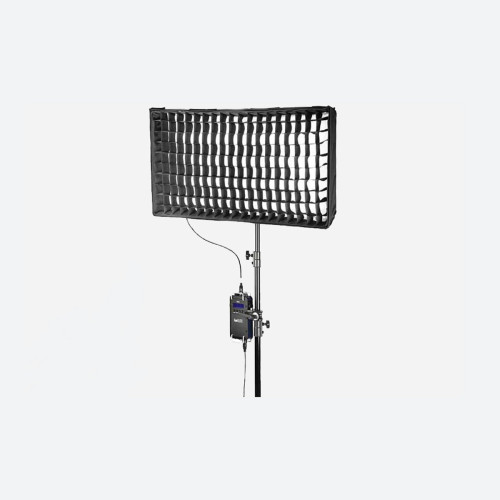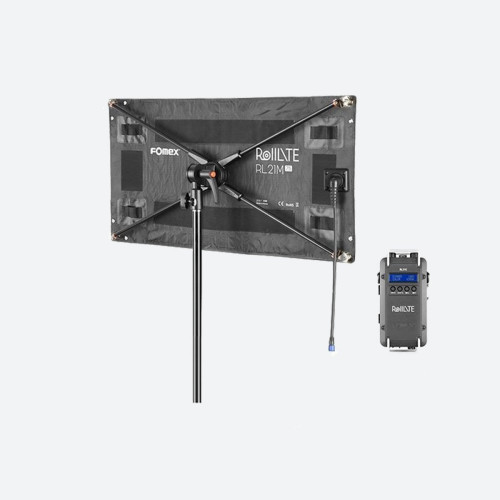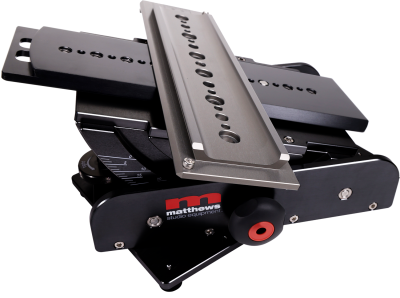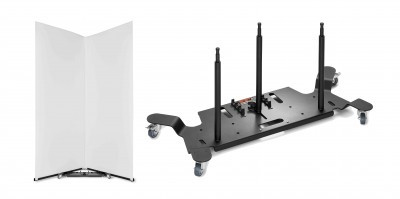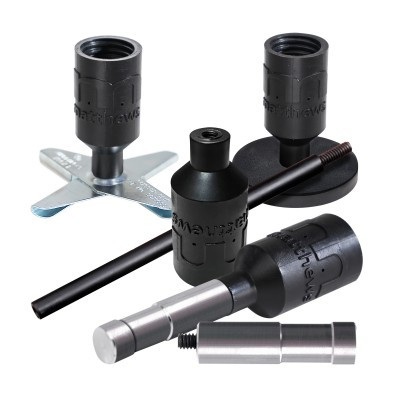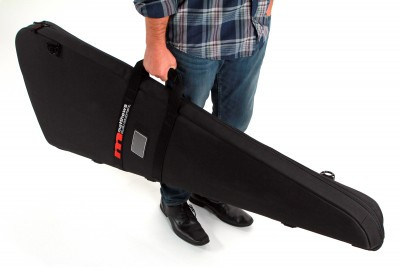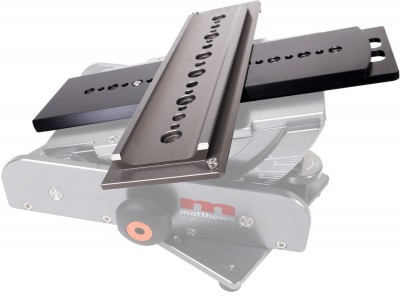Commonwealth Games Will Be All Right On The Night

Author: Bob Pank#
Published 1st December 2010
Fans of Bollywood films will be familiar with the classic Indian wedding storyline in which complete chaos usually engulfs the event right up to the moment when the groom arrives, at which point everything comes together and everyone has a whale of a time and puts behind them the dramas that preceded the ceremony. The XIX Commonwealth Games (CWG) in Delhi had all of these ingredients thrown in and more besides.
As most people will know, the run-up period to the Games was beset by controversy and problems. It began with accusations of corruption, abuses of labour agreements and concerns about delays in completing the facilities. Homeless people, cows and stray dogs had been rounded up and removed from the streets of Delhi and there were worries about the limited provision of accommodation for visitors and indeed if they would come at all. Two weeks before the opening ceremony, conditions at the athlete’s village had been described as filthy, unhygienic and unfit for human habitation resulting in several teams delaying their departure from their home countries. On the same day 23 labourers were injured as a bridge being built near the main Games venue collapsed. The day after that saw the ceiling at the weightlifting venue supposedly collapsed. With such calamity before the opening speeches were even made, everyone’s confidence in the event seemed to be collapsing very much like the venues themselves and the wedding was quickly turning into a bedroom farce.
You’re probably wondering how I became embroiled in this drama? Well it all began with Prasar Bharati, the Broadcasting Corporation of India, who had chosen Doordarshan, one of their subsidiaries, to be the Host Broadcaster for the Games. In turn, Prasar Bharati awarded the contract to deliver the television production and coverage facilities/services to SIS Live. SIS Live, which incorporates the former BBC Outside Broadcast division, has over 70 years experience of covering major sporting events, and provides the facilities and personnel to cover everything from Formula One to Wimbledon to the London Marathon.
This is where my 1st Option Safety Services colleagues and I slotted into the giant CWG jigsaw puzzle. As SIS’s appointed health and safety consultants, we were brought in to monitor their health, safety and security arrangements and to provide competent advice, guidance and support to SIS’s operations throughout the CWG including the planning, rigging, event and de-rig phases.
The CWG itself was the largest multi-sports event ever undertaken in India, with some 6,500 athletes and officials from 71 different nations that competed across a 17-sport programme held from the 3rd – 14th October. The scope of the televised coverage, as you can imagine for a sporting event of this size and nature, was immense. SIS employed over 1,400 highly skilled technicians, production crew and support staff at 23 venues and fields of play, as well as the opening and closing ceremonies. Of these, some 450 production, technical and support staff came direct from the UK while the remainder were drawn from 36 countries around the world such as Australia, Canada, Singapore, Malaysia and Denmark. The multilateral coverage of the CWG involved up to 40 production areas and outside broadcast kits of various sizes, over 350 high-definition (HD) camera channels, 100 HD long lenses, 115 EVS (instant tapeless technology) hard disk recorders, as well as a wide range of specialist production and camera equipment.
With such a huge technically challenging event to plan for and to manage from a health and safety perspective, where did we begin?
Planning
We anticipated that the array of different events taking place across a variety of locations condensed into a 12-day period would be intense but we believed the application of good planning and preparation techniques, and the use of the best available equipment and people, would give us a realistic chance to deliver the best technical provision for the 2010 Games in a healthy, safe and secure manner.
The health, safety and security preparations for the CWG really began as soon as the contract was awarded back in late October 2009. A number of visits were made in the lead up to the Games in which each venue and field of play was thoroughly recced to identify the key health and safety issues such as, for example, access/egress, lighting conditions, rigging, potential work at height, electrical distribution, fire, safety arrangements and security, welfare, and first aid arrangements. We also examined all aspects of the technical requirements for each of the venues, including camera and commentary positions, presentation studios, announcer positions, commentary control rooms, broadcast compounds and technical operations centres.
This early appraisal proved to be really invaluable in that it gave us an insight into what we needed to think about initially and the key areas to focus upon. From this, a general risk assessment was compiled which covered all of the main broadcasting activities. Interestingly, the recces also provided a foretaste of some of the challenges and obstacles we were to later face both in the run up and the duration of the Games. As an example, we were expecting the handover of completed broadcast compounds from the Organising Committee (OC) and Doordarshan early in June but this didn’t happen in reality until mid-September, which was just a few days before the start of the event. As you can imagine, this had a huge knock-on effect upon our technical and logistical plans and preparations. Despite the obvious concerns, SIS and the 1st Option safety team continued on with their arrangements.
So how did it turn out? Let’s look at each of the big topic areas individually.
Venue safety
Although safety in general occupies a significant position in India’s constitution, compliance is known to be poor and there is minimal enforcement. We tried to apply UK health and safety standards to all of our own operations as best we could, but often SIS staff faced situations, and/or working in conditions, that perhaps would not be tolerated in the UK.
As already mentioned, an extensive programme of safety planning, risk assessment and inspections was done for every CWG venue and field of play. Camera positions were discussed at length during many recce meetings so that these were located in positions both to get the best pictures possible for the viewer and be safe for spectators, competitors and camera operators. We scheduled most of the rig and de-rig work so that all overhead and cable set-ups were done with little or no public access. In areas where it is not possible to bury/trench/fly cables then suitable covering mats/ramps were used.
The rigging and operation of specialised cameras used throughout the various venues (e.g. plunge cam in the diving pool, high remote heads to cover the relay race changeovers in the main stadium etc.) had their own detailed risk assessments to ensure they were, wherever necessary, either safe by position, double bonded, remotely controlled, the operator had clear unobstructed line of sight, and/or spotters placed at tracked camera positions. At certain high-risk events such as shooting where the cameras need to be reset or adjusted between events, strict arrangements were put in place to ensure that no one was in the vicinity when these operations take place.
For our electrical needs, India operates a different voltage system to the UK and power fluctuations is a common occurrence therefore it was critical that the power supply for our equipment was trusted. We endeavored to install the electrical distribution according to the UK standard BS7909 (Code of Practice for temporary electrical systems for entertainment) and an approved UK contractor closely supervised this work. Following this, each Venue Technical Manager (i.e. Engineering Manager) then managed and took responsibility for the safe use of electricity at each venue and field of play.
It should be mentioned that some of electrical equipment provided locally was not always wired up correctly and so these had to be checked and made safe. There were also concerns expressed about locally sourced jimmy jibs being used at one of the venues. Following a safety check, it was found that although they weren’t quite to the UK standards to which the crew were accustomed, nevertheless they were found to be fit for purpose provided that a few additional safety precautions were applied.
Working at height was one of our highest risk activities. For any work that we did significantly above ground, we made sure the necessary arrangements were in place so that: correct personal protective equipment (PPE) was used for the job; a fall arrest/restraint system with harness and suitable attachment was in place; no-one went within a minimum of 2 metres from the edge where there were unprotected drops; use of restraint lines, safety belts, harnesses and lifelines as necessary, including suitable anchorage points and properly trained users. Temporary ladders were only used for a short duration, and alternative fixed platforms or scaffolds were put employed for longer jobs.
In addition to the main risk assessment, separate specific risk assessments were done for each of the specialist activities such as cable rigging; camera platforms; filming from motorcycles (to cover road events such as the marathon, cycling and the walk); specialist cameras; and aerial filming. All of this documentation formed part of the CWG Venue H&S Pack, a copy of which was kept at all venues and issued to all key managers, and entailed:
Risk assessments
Staff emergency medical procedure
Accident reporting procedure
Serious injury or fatality procedure
List of key manager contact details
Security incident procedure
Lists of emergency assembly points
Blank incident report form
Health
The weather leading up to the Games was quite contrasting and therefore posed a number of different issues. The summer months of May and June turned out to be one of their hottest on record in which our staff regularly encountered daytime temperatures approaching 50°C (122°F). Apart from ensuring that bottled water was readily available at all CWG venues, we constantly reminded everyone on the need to drink lots of fluids, avoid drinking tap water and order any drinks without ice. We also advised them to apply plenty of sunscreen lotion and wear caps or hats, to prevent possible sunburn and heat stroke. During the Games, the outdoor sports such as Hockey, Lawn Bowls and Tennis needed as much shading for our camera operators and production crew as we could provide through parasols, tents and other temporary forms of weather cover.
The searing hot summer was followed in August and September by the capital’s heaviest monsoon rains in 15 years and left large quantities of stagnant water on CWG construction sites as well as in tanks and ponds, and this raised concerns over increased levels of mosquito-borne disease. New Delhi reported over 4,000 cases of dengue this year and inevitably a handful of these involved our production staff. Fortunately they were all relatively mild cases and everyone recovered to full health.
For some of the venues, cabling work had to be done in drains and in areas infested with vermin such as rats or similar. This meant the riggers were exposed to a variety of health effects including risk of disease such as Weil’s Disease (Leptospirosis) - an infection passed on primarily from rat’s urine; Hepatitis A - where water contaminated by raw sewage is swallowed; Tetanus and typhoid - infections from contaminated water enter the body by swallowing, through the mucous membranes of the mouth, nose or eyes, and/or through broken skin, cuts and abrasions.
The key advice given to the rigging crews was of course to avoid any water that was obviously contaminated. Where this wasn’t possible, we recommended that they covered all cuts and broken skin with waterproof plasters; wore suitable protective clothing; avoided water entering the mouth or eyes as far as possible; limited the period of exposure; washed their hands after handling any contaminated clothing or other equipment/material, and always before eating, drinking or smoking; washed any fresh cuts or abrasions thoroughly. We also made sure that everyone was up to-date with their vaccinations.
As part of our planned contingency arrangements, a number of additional first aiders were trained to boost our coverage at each broadcast venue and trauma packs were to be held at each Broadcast Compound. Unfortunately the standard of the locally sourced first aid kits initially delivered was not to our satisfaction and therefore hasty arrangements were made to ship packs over from the UK.
We were also aware that public medical facilities across Delhi are of variable quality so our staff and crew were provided access to SIS-approved private clinics and hospitals. These facilities were internationally accredited, modern institutions equipped with emergency rooms and ambulance services. With a production team of over 1400 people, geographically spread and working in challenging conditions, it was critical to be able to get a doctor to anyone as soon as possible at any venue 24 hours a day.
One of our biggest concerns throughout the Games was the quality of the food being provided at the venues. Unusually, catering was not allowed to be prepared within the broadcast compounds, which then meant it had to brought in from outside. There were question marks about both how and when the food was being prepared in advance, where it came from and how it was being transported. Once it reached the venue, there was the ongoing problem of getting it through the security cordon. There is little doubt that the food at the compounds did cause a number of stomach upsets amongst the crews. Steps were eventually taken by the management team to rectify the problem, but unfortunately this took rather longer than some people would have liked, mainly because of the bureaucracy involved.
In the end, we lost around 2-3% of production staff at various times through a number of ailments such as gastroenteritis, heat stress, dengue, and the infamous Delhi belly. This relatively low figure is testament not only to the pre-travel advice given, but also to the efficiency of the medical emergency procedure that facilitated a prompt response to any health problem that arose, followed by early diagnosis and treatment, which in turn helped to promote a quick recovery.
Personal safety and security
From a personal safety point of view, the normal advice of working abroad applied. As part of the accreditation process, all SIS crews received an information pack about the personal safety and security risks before they traveled out. Of course, the high profile nature of any large sporting event is always a tempting target for both terrorists and opportunist criminals alike.
The security threat assessments were kept under active review in the build up and during the Games. The assessments recognized that there would be an increase in threat messages against the Games in order to disrupt them. False claims are a common feature of south Asian insurgent groups.
As such, in the build up to the Games we expected the media to report an increase in 'chatter', of which some would be alarmist. However, security fears were really heightened just thirteen days before the Games when two Taiwanese tourists were shot by suspected militants near India's main mosque in Old Delhi. Two hours later, a car also exploded in the vicinity, reportedly from a deliberate low-intensity pressure cooker bomb that had been assembled inside. The obvious motive of the strike was to instill fear in people ahead of the CWG and to dissuade them from attending.
These two incidents prompt an immediate security clampdown by the authorities that lasted right into the games themselves. Whilst it was reassuring that the Indian law enforcement agencies took the security threat with extreme seriousness, it eventually became a logistical nightmare to get production equipment and other supplies, even water and food, into the venues because of the stringent measures taken.
In the end there were no further security incidents reported and we should of course be wholly grateful for that, but the operational difficulties and other safety concerns that emerged did give us cause for concern at times. For example, we discovered during our safety walk-rounds that many of the unmanned fire exits in the sporting venues were actually chained and padlocked due to security fears. Of course, we got them unchained, albeit after considerable discussion, but it could have resulted in a disaster on a mammoth scale had say a stadium needed to evacuate before this came to light.
As for getting to and from the venues, driving in Delhi appears chaotic. The roads are just rivers of cars, trucks, buses, motorbikes, scooters, cows, bicycles, three wheeled motorized rickshaws (Tuk-Tuks), three-wheeled pedaled rickshaws, donkeys, horse drawn carts, dogs and the odd elephant. The space between each vehicle is measured in inches. It looked dangerous and it is to some degree. It appears to be extremely aggressive but there is also a level of tolerance and cooperation that you will not see in the UK. Anyone who is not familiar with the “rules” of the road is at considerable risk and therefore transport to and from venues was arranged through approved transport companies using security-cleared drivers.
The CWG experience
We knew that poor safety practice is endemic in India, and that health and welfare standards in particular would be a considerable issue for our staff. As we know, it almost proved too intolerable for the Games’ athletes and officials. There were the swathes of bureaucracy to wade through if you needed anything from the OC and the security forces were unrelenting in their efforts to make sure nothing got pass them either.
Such was the obstinacy of our host at times that I honestly thought operationally we wouldn’t see any of the CWG on television. In the end, however the standard of the television and radio coverage was incredibly high and this was entirely due to the quality of the staff, their dedication, enthusiasm, professionalism and, above all, remarkable resilience and determination in the face of some really extremely difficult obstacles.
Remarkably, whether it was through design or just sheer good fortune, there were very few significant accidents that occurred to SIS staff during the CWG project. Even the number of staff illnesses was far below what we expected, although many people did return home absolutely knackered from the experience.
It was quite a different story beyond the broadcast compound perimeter. Stories of ticketing problems, snakes, dirty swimming pools, blocked toilets, lack of spectators, biting monkeys, and gaffes by the OC seemed to circulate almost daily.
For me personally, the journey to the destination was occasionally nerve-wracking but in the end the groom did arrive for his big day in pomp and style. It was certainly an event to remember in that so much happened both on and off the fields of play. The question still remains in my mind as to whether this CWG will be remembered down the years as either a triumph over adversity or just an embarrassment. As usual the truth probably lies somewhere in between.
It did turn out to be all right on the night … but only just.
About the author
Vittorio Vanloo is s Principal Health and Safety Consultant for 1st Option Safety Services Limited who provide a range of health, safety and security consultancy services to broadcast, film, television, radio and news programme makers as well as support staff. He is a chartered member of the Institution of Occupational Safety and Health (CMIOSH), a registered safety practitioner, and been a safety advisor for over twenty years with 1st Option, BBC and British Waterways.



